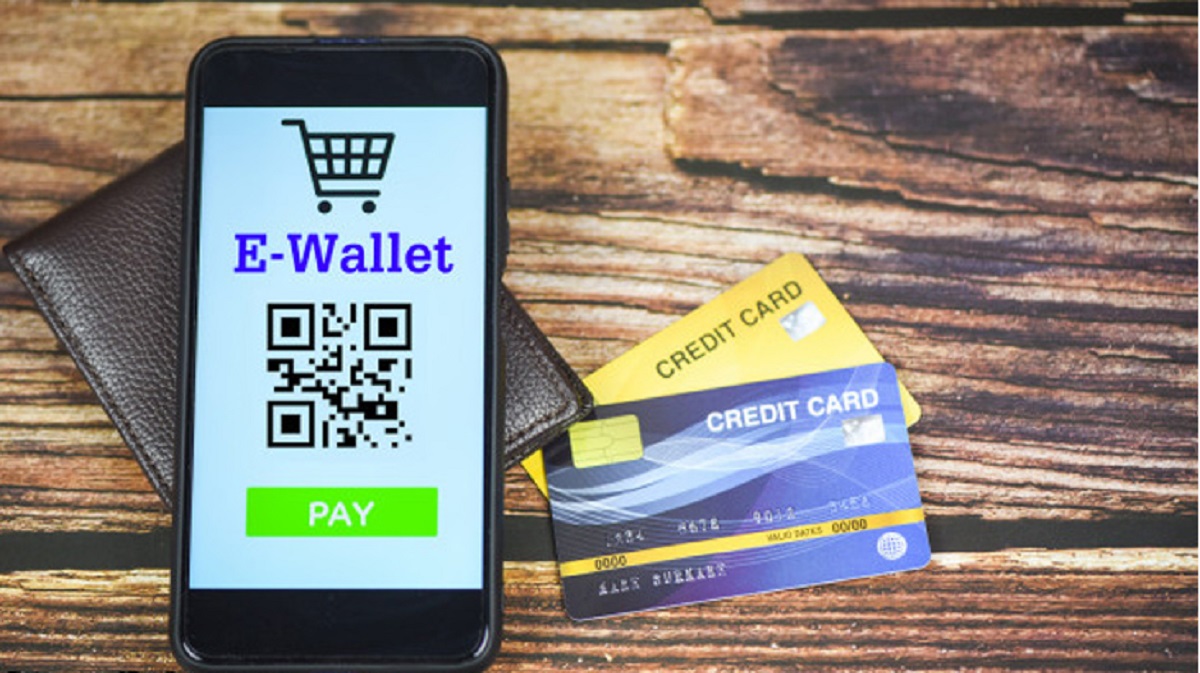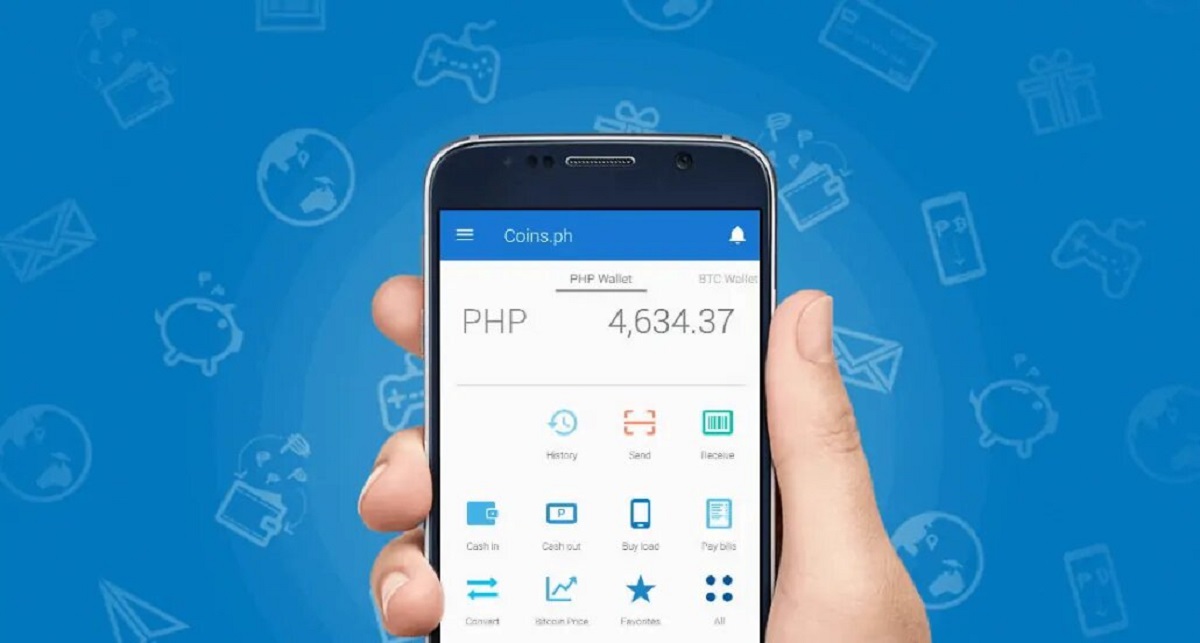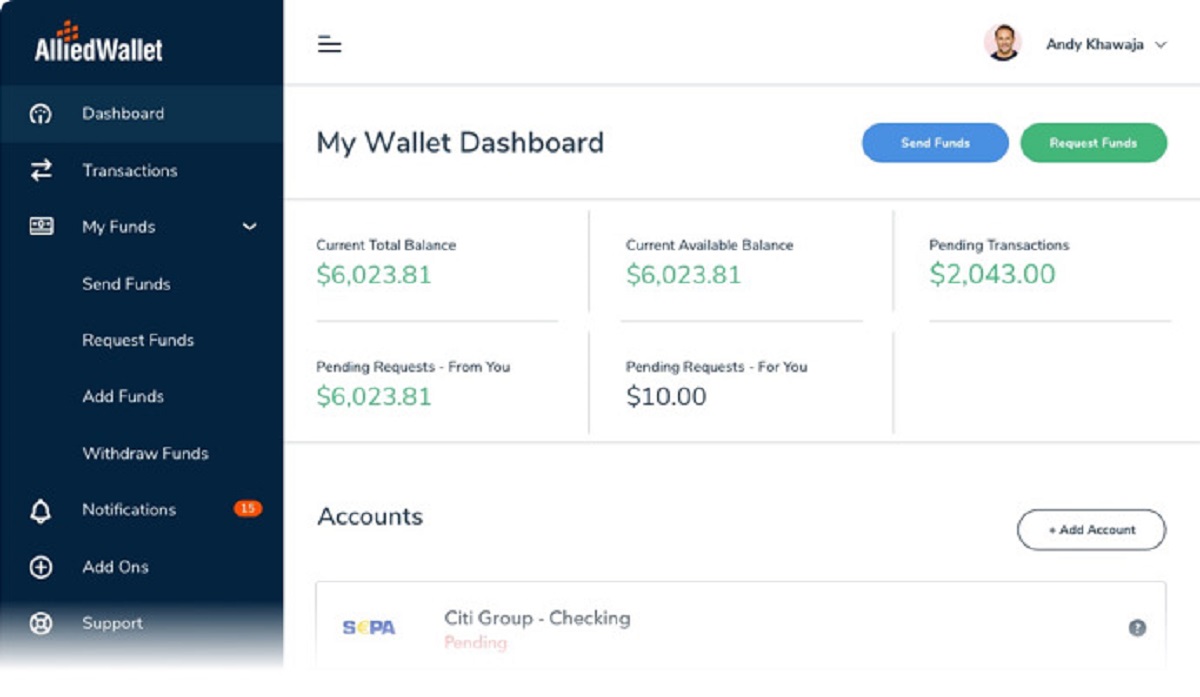Introduction
Managing your finances and making secure online transactions has become increasingly convenient with the rise of e-wallets. E-wallets or electronic wallets offer a seamless and efficient way to store, send, and receive money digitally. With just a few clicks, you can pay bills, shop online, or transfer funds to friends and family.
However, it’s important to keep in mind that like any digital asset, the data stored in your e-wallet is vulnerable to various risks such as theft, hardware failure, or accidental deletion. Losing access to your e-wallet can be a frustrating and financially devastating experience. That’s why backing up your e-wallet is crucial to safeguard your funds and maintain peace of mind.
In this article, we will explore the importance of backing up your e-wallet and different methods to ensure the safety and accessibility of your digital assets. Whether you’re a seasoned e-wallet user or new to the world of digital payments, understanding how to backup your e-wallet is essential to protect your financial security.
Now, let’s dive into the world of e-wallet backups and discover the best practices to keep your digital funds secure.
Importance of Backing Up Your E-Wallet
Backing up your e-wallet is not just an optional step but a critical aspect of managing your digital finances. Here are some compelling reasons why backing up your e-wallet is of utmost importance:
1. Protection against data loss: Your e-wallet contains crucial information such as account balances, transaction histories, and private keys. By backing up this data, you protect yourself from potential data loss due to device failure, malware attacks, or accidental deletion.
2. Recovery from theft: In unfortunate cases of theft or unauthorized access to your e-wallet, having a backup enables you to restore your funds and regain control over your digital assets.
3. Seamless transfer across devices: If you upgrade to a new device or switch between multiple devices, having a backup ensures a smooth transition without losing your e-wallet data. This way, you can easily access your funds and continue using your e-wallet without any interruption.
4. Protection against hardware failure: Hardware failure is a common occurrence that can result in permanent loss of data. By regularly backing up your e-wallet, you create a copy of your information that can be easily restored in case of hardware malfunction.
5. Peace of mind: Life is full of uncertainties. Accidental data loss, device theft, or technical glitches can happen at any time. By having a backup of your e-wallet, you can enjoy peace of mind, knowing that your digital finances are secure and can be quickly recovered if needed.
The importance of backing up your e-wallet cannot be overstated. It is a proactive step that ensures the safety and availability of your digital funds, protecting you from potential financial losses and inconvenience.
In the next sections, we will explore various methods to backup your e-wallet, allowing you to choose the approach that best suits your needs and preferences.
Different Methods to Backup Your E-Wallet
In order to protect your e-wallet and ensure the safety of your digital assets, it’s essential to employ reliable backup methods. Here are five different methods you can explore:
- Cloud Backup: One of the most convenient and popular methods is to use cloud backup services. With this approach, your e-wallet data is securely stored on remote servers, accessible anytime and from any device with an internet connection. Popular cloud storage providers such as Google Drive or Dropbox offer seamless integration and ensure the safety of your data.
- Physical Backup: Another option is to create a physical backup of your e-wallet. This involves storing a copy of your wallet data on physical devices such as external hard drives, USB flash drives, or even DVDs. By keeping these backups in a secure location, you can recover your e-wallet in case of device failure or data loss.
- Hardware Wallets: Hardware wallets are physical devices specifically designed to store and secure your digital assets. These wallets, such as Ledger or Trezor, offer offline storage, reducing the risk of online attacks. They often come with built-in backup options that allow you to recover your e-wallet using a recovery seed or phrase.
- Paper Wallets: For those who prefer a more offline approach, paper wallets can be an effective method. A paper wallet is simply a printout of your e-wallet information, including public and private keys. By generating and printing your wallet details offline, you can have physical copies that are not exposed to online threats.
- Seed Phrases: Many e-wallets, especially those based on cryptocurrency technology, use seed phrases as a backup method. A seed phrase is a unique combination of words that acts as a backup of your e-wallet. By writing down and safely storing your seed phrase, you can restore your e-wallet and access your funds even if your original e-wallet is lost or inaccessible.
Choosing the right backup method depends on your preferences, level of security required, and the type of e-wallet you use. It’s important to carefully consider these factors and implement a backup strategy that works best for you.
Now that we have explored the different methods to backup your e-wallet, let’s move on to discussing the best practices for ensuring the effectiveness of your e-wallet backups.
Cloud Backup
Cloud backup is a popular and convenient method for backing up your e-wallet data. With cloud storage services like Google Drive, Dropbox, or iCloud, you can securely store your e-wallet information on remote servers accessible from any device with an internet connection.
Here are some key benefits of utilizing cloud backup for your e-wallet:
- Accessibility: Cloud storage allows you to access your backup files from anywhere, at any time. Whether you’re using your smartphone, tablet, or computer, you can retrieve your e-wallet data effortlessly.
- Automatic Syncing: Cloud storage services often provide automatic syncing, ensuring that your e-wallet data is always up-to-date across all devices. Any changes made to your wallet on one device will be reflected in the cloud backup.
- Secure Storage: Reputed cloud storage providers offer advanced security measures to keep your data safe. They utilize encryption protocols and multi-factor authentication to protect your e-wallet information from unauthorized access.
- Data Preservation: Cloud storage systems are designed to preserve your data even in the event of device failure or accidental deletion. This means that even if you lose your device or experience a hardware malfunction, your e-wallet data will remain intact and accessible via the cloud backup.
When using cloud backup for your e-wallet, it’s important to keep a few best practices in mind:
- Choose a Reliable Cloud Service: Ensure that you opt for a reputable and reliable cloud storage provider with a track record of strong security measures and reliable service.
- Enable Two-Factor Authentication: To add an extra layer of security, enable two-factor authentication for your cloud storage account. This will require an additional verification step, such as a code sent to your mobile device, to access your e-wallet backups.
- Encrypt Your E-Wallet Data: Before uploading your e-wallet backup to the cloud, consider encrypting the data to further enhance its security. This ensures that even if someone gains unauthorized access to your cloud storage, your e-wallet information remains protected.
- Regularly Verify and Update Backups: Make it a routine to check the integrity of your cloud backups and ensure that they are up-to-date. Regularly review and update your backups to include any recent e-wallet transactions and changes.
Cloud backup provides a convenient and secure way to protect your e-wallet data. By following these best practices, you can ensure the effectiveness of your cloud backups and have peace of mind knowing that your digital assets are safe and accessible.
Physical Backup
Creating a physical backup of your e-wallet is another reliable method to ensure the safety and accessibility of your digital assets. This approach involves storing a copy of your wallet data on physical devices such as external hard drives, USB flash drives, or even DVDs.
Here are some important aspects to consider when using physical backup for your e-wallet:
- Offline Storage: Physical backup provides an offline storage solution, reducing the risk of online attacks and unauthorized access to your e-wallet data. Since the backup is not connected to the internet, it is less vulnerable to hacking or malware.
- Redundancy: Creating multiple physical backups adds an extra layer of redundancy, ensuring that even if one backup device fails, you have other copies to rely on. Consider keeping backups in different locations to protect against damage or loss due to natural disasters or theft.
- Secure Storage: It is crucial to store your physical backups in a secure location. Choose a place that is safe from theft, fire, and other potential hazards. Consider using a locked drawer, safe, or safety deposit box to protect your backup devices.
- Regular Updates: Just like any other backup method, it is important to regularly update your physical backups. Make it a habit to back up your e-wallet data at regular intervals, especially after significant account changes or transactions.
When creating physical backups, it’s important to take the necessary precautions to protect your sensitive e-wallet data:
- Encryption: Consider encrypting your e-wallet data before storing it on physical devices. Encryption adds an extra layer of security, ensuring that even if someone gains access to your backup devices, they won’t be able to decipher the data without the encryption key.
- Labeling and Organization: Properly label your physical backup devices to easily identify them when needed. Additionally, maintain an organized system to keep track of the different versions of backups and their creation dates.
- Regular Verification: Periodically verify the integrity and accessibility of your physical backups. Check that the devices are working properly and that you can restore your e-wallet data from the backups if necessary.
- Migrate to New Devices: When upgrading to a new device, ensure that you transfer your e-wallet data from the physical backup to the new device. This will ensure a seamless transition without any disruption in accessing your digital assets.
Physical backup offers a tangible and reliable way to protect your e-wallet data. By following these best practices and incorporating physical backups into your e-wallet management routine, you can safeguard your digital assets and have peace of mind knowing that you have an offline backup solution.
Hardware Wallets
Hardware wallets provide an excellent option for those seeking enhanced security and ease of use when it comes to backing up their e-wallet. These physical devices are specifically designed to securely store and manage digital assets, keeping your e-wallet data offline and protected from online threats.
Here are some key advantages of using hardware wallets for backup:
- Offline Storage: Hardware wallets offer offline storage for your e-wallet data, limiting the risk of online attacks or hacking attempts. Since the private keys and sensitive information are stored within the hardware device, it becomes extremely difficult for hackers to gain unauthorized access to your digital assets.
- Built-in Backup Options: Most hardware wallets provide built-in backup options to ensure the safety of your e-wallet data. They generate a recovery seed or phrase that you can write down and store safely as a backup. This feature allows you to restore your e-wallet on a new device if the current one is lost or damaged.
- User-Friendly Interface: Hardware wallets come with user-friendly interfaces that make it easy to manage your e-wallet. The intuitive design and clear instructions make the backup process straightforward, even for those who may not be technically inclined.
- Compatibility: Hardware wallets are compatible with various e-wallet software and blockchain platforms, making them versatile and suitable for a wide range of users.
When using hardware wallets for backup, it is important to follow these best practices:
- Choose a Trusted Brand: Opt for a hardware wallet from a reputable and trusted manufacturer to ensure the security and reliability of your e-wallet backup solution.
- Keep Your Seed Phrase Secure: Safely store the recovery seed or phrase generated by the hardware wallet. Consider using a physical vault or a secure location that is protected from theft or damage.
- Avoid Sharing Seed Phrases: Never share your recovery seed or phrase with anyone. Keep it strictly confidential to maintain the security of your digital assets.
- Regularly Update Firmware: Stay up to date with the latest firmware updates for your hardware wallet. Firmware updates often include security enhancements and bug fixes that can further strengthen the protection of your e-wallet data.
Hardware wallets provide a secure and user-friendly means of backing up your e-wallet. By following these best practices, you can ensure the safety and accessibility of your digital assets, giving you peace of mind and confidence in managing your e-wallet.
Paper Wallets
If you prefer an offline approach to backup your e-wallet, paper wallets offer a simple and secure method. A paper wallet is a physical printout of your e-wallet information, including the public and private keys necessary for accessing and managing your digital assets.
Here are the key aspects of using paper wallets for backup:
- Offline Storage: Paper wallets provide offline storage, which means the private keys associated with your e-wallet are not stored on any online device. This significantly reduces the risk of online attacks or hacking attempts.
- Physical Tangibility: As a physical printout, paper wallets offer a tangible backup solution. This can be especially appealing to individuals who prefer having a physical copy of their e-wallet information rather than relying on digital backups.
- No Hardware Dependencies: Unlike hardware wallets or other types of backups that require external devices, paper wallets only rely on the printed information. This makes them convenient and accessible even without the need for specific hardware or software setups.
- Offline Transactions: Paper wallets allow you to perform offline transactions. You can generate and print out a paper wallet, load funds onto it by transferring digital assets to the associated public address, and store it securely until you’re ready to spend or sell.
When creating and using paper wallets, there are some important considerations to keep in mind:
- Secure Generation: Generate your paper wallet offline using a trusted and reputable generator tool or software. This ensures that your private keys are not compromised during the creation process.
- Printer Security: Use a secure printer and ensure that it is not compromised by malware or unauthorized access. Consider using a dedicated printer for generating paper wallets to minimize potential security risks.
- Safe Storage: Protect your paper wallet from physical damage and unauthorized access. Consider using a sealed envelope, safe, or other secure storage options to keep it safe from theft, fire, or water damage.
- Single-Use: Consider using each paper wallet only once. Once you have transferred the funds to another wallet, it is advisable to destroy the paper wallet to prevent any potential security risks associated with reusing it.
While paper wallets offer an offline backup solution, it is essential to handle and store them with care. By following these best practices, you can ensure the security and accessibility of your e-wallet backup, providing you with a peace of mind when it comes to managing your digital assets.
Seed Phrases
Seed phrases, also known as recovery phrases or mnemonic phrases, are an increasingly popular method for backing up e-wallets, especially those based on cryptocurrency technology. A seed phrase is a unique combination of words that serves as a backup of your e-wallet. It acts as a master key that can recreate your wallet and access your digital assets.
Here are the key aspects of using seed phrases for backup:
- Secure Backup: Seed phrases offer a highly secure backup solution as they are generated using cryptographic algorithms. This ensures that even if your original e-wallet is lost, damaged, or inaccessible, you can restore your wallet and regain control over your digital assets using the seed phrase.
- Offline Storage: Seed phrases can be written down and stored offline, reducing the risk of online attacks or hacking attempts. By keeping the seed phrase offline, you eliminate the possibility of it being compromised by malware or unauthorized access.
- Ease of Use: Seed phrases are designed for ease of use and accessibility. The combination of words in the phrase is generally easy to remember and can be written on paper or stored securely using other physical mediums.
- Compatibility: Seed phrases are usually compatible with various e-wallet software and platforms. This allows for easy restoration and access to your digital assets across different wallets and services.
When using seed phrases for backup, it is essential to follow these best practices:
- Write Down and Store Securely: Write down your seed phrase on a piece of paper, ensuring that it is stored in a safe and secure location. Consider using multiple copies stored in different secure places to prevent loss due to theft, fire, or other potential risks.
- Avoid Digital Storage: Avoid storing your seed phrase digitally or taking screenshots on devices that are connected to the internet. Digital storage increases the risk of unauthorized access and potential exposure to malware or hacking attempts.
- Mnemonic Techniques: Mnemonic techniques such as creating associations or using unique phrases can help you remember your seed phrase more easily. By associating the words with familiar or memorable images, you can enhance your capacity to recall the seed phrase.
- Keep Seed Phrase Private: Treat your seed phrase like a valuable possession and keep it private. Do not share it with anyone or enter it into untrusted websites or software that might compromise your e-wallet security.
Seed phrases offer a secure and convenient method to backup e-wallets. By following these best practices, you can ensure the safety and accessibility of your digital assets, providing you with peace of mind and the ability to confidently manage your e-wallet.
Best Practices for Backing Up Your E-Wallet
Backing up your e-wallet is crucial for safeguarding your digital assets and ensuring their accessibility in case of unforeseen circumstances. To effectively backup your e-wallet, consider following these best practices:
- Implement Multiple Backup Methods: It is wise to employ multiple backup methods to increase redundancy and mitigate the risk of data loss. Choose a combination of cloud backup, physical backup, hardware wallets, paper wallets, or seed phrases to ensure the safety of your e-wallet data.
- Follow a Regular Backup Schedule: Set a regular backup schedule to ensure that your e-wallet data is consistently protected. Decide on a frequency that suits your usage pattern and make it a habit to back up your e-wallet at regular intervals.
- Use Strong Passwords: Implement strong and unique passwords for your e-wallet and associated backup services. A strong password helps prevent unauthorized access and adds an extra layer of security to your digital funds.
- Keep Software and Firmware Updated: Ensure that your e-wallet software, apps, and hardware wallets are kept up to date with the latest security patches and firmware updates. Regular updates often include bug fixes and security enhancements that help protect your e-wallet from potential vulnerabilities.
- Test Your Backups: Periodically test the effectiveness of your backups by restoring them to a different device or platform. This will allow you to verify that your backups are working correctly and that you can access your e-wallet data when needed.
- Protect Your Backup Devices: Treat your physical backup devices with care and ensure they are stored securely. Keep them in a safe location, away from potential hazards or theft, to maintain the integrity of your e-wallet backups.
- Stay Vigilant Against Phishing Attacks: Be cautious of phishing attempts and fake websites that can trick you into providing your e-wallet information or backup details. Only access your e-wallet or backup services through trusted and verified channels to prevent falling victim to scams.
- Document and Organize Backup Details: Maintain clear documentation of your backup methods, including passwords, seed phrases, or instructions for restoring your e-wallet. Keep these details in a secure place and ensure that they are easily accessible when needed.
- Regularly Review and Update Backup Strategies: As technology evolves and new backup methods emerge, it is important to stay informed and review your backup strategies periodically. Stay updated on the latest advancements in e-wallet security and adapt your backup methods accordingly.
By following these best practices, you can ensure the effectiveness of your e-wallet backups and minimize the risk of losing access to your digital assets. Remember, the goal is to protect your e-wallet data and maintain control over your finances, even in the face of unexpected events.
Conclusion
Backing up your e-wallet is a crucial step in protecting your digital assets and ensuring their accessibility in the face of potential risks. Whether you choose to use cloud backup, physical backup, hardware wallets, paper wallets, or seed phrases, implementing a backup strategy tailored to your needs is essential for securing your e-wallet data.
By backing up your e-wallet, you can protect yourself against data loss, recover from theft or hardware failure, enable seamless transfer across devices, and ultimately gain peace of mind knowing that your financial security is optimized.
Remember to follow best practices such as employing multiple backup methods, maintaining a regular backup schedule, using strong passwords, keeping software and firmware up to date, and testing your backups periodically. Protecting your backup devices, staying vigilant against phishing attacks, and organizing your backup details are also key factors in ensuring the effectiveness of your e-wallet backups.
Whether you’re a seasoned e-wallet user or new to the world of digital payments, taking the time to understand and implement proper backup procedures is a worthwhile investment. By doing so, you can safeguard your digital assets, maintain control over your finances, and confidently navigate the increasingly convenient world of e-wallets.
So, don’t wait any longer. Take action now and secure your e-wallet with a robust backup strategy. Your financial future may depend on it.

























